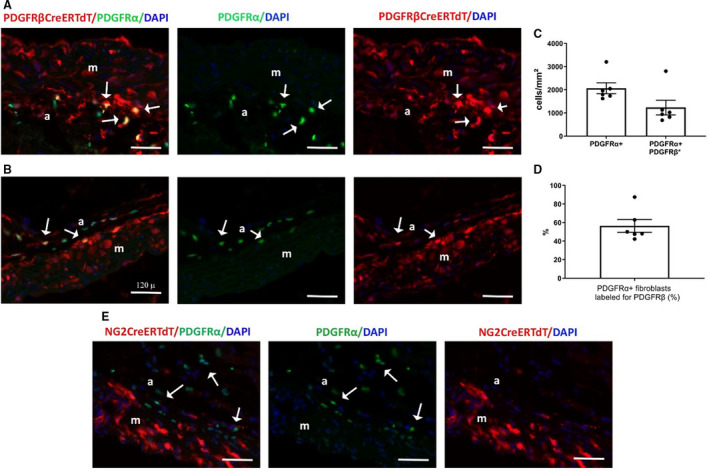Figure 8. In the ascending aorta, the neuron‐glial antigen 2 (NG2) tamoxifen‐inducible Cre recombinase (CreERTM) driver is specific for mural cells, whereas the inducible platelet‐derived growth factor receptor (PDGFR)βCreERT2 driver lacks specificity, also labeling PDGFRα+ aortic adventital fibroblasts.

A through D, To test the specificity of the inducible PDGFRβ‐Cre driver for aortic mural cells, we bred PDGRβiCre/+;R26tdTomato mice with fibroblast reporter PDGFRαEGFP mice. Dual immunofluorescence of aortic sections shows that the inducible PDGFRβ‐Cre driver lacks specificity, labeling a large fraction of PDGFRα+ adventitial fibroblasts (A, C: arrows). Quantitative analysis shows (n=6) the density of adventitial PDGFRα+ fibroblasts and the density of fibroblasts labeled for PDGFRβ in the ascending aorta (C). D, More than 50% of adventitial fibroblasts (PDGFRα+ cells) were labeled for PDGFRβ (n=6). E, To test the specificity of the inducible NG2‐Cre driver, NG2iCre/+;R26tdTomato were bred into the PDGFRαEGFP reporter mouse line. Sections from the ascending aorta were stained for tandem dimer Tomato (tdTomato) and green fluorescent protein. Dual fluorescence shows that aortic adventitial fibroblasts (arrows) are not labeled for NG2, supporting the specificity of the inducible NG2‐Cre line. Images are representative of 6 different experiments. Scalebar=120 μm. Data are expressed as mean±SE. a indicates adventitia; DAPI, 4’,6’‐diamidino‐2‐phenylindole; EGFP, enhanced green fluorescent protein; and m, media.
